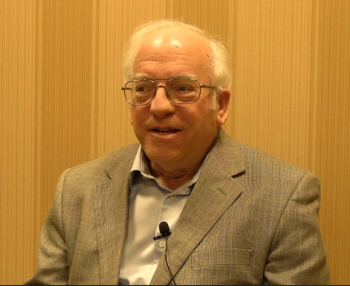
How Google is Using Optical Sensors in its Wearable Technology
Spectroscopy spoke with a senior scientist at Google to understand how the company is using light wearable technology like the Fitbit.
Wearable health technology is all the rage right now. Research shows that almost one in three adults are using a wearable device like a smart watch to track health and fitness, according to the
Spectroscopy recently spoke with Pete Richards, senior staff research scientist, at Google to discuss how the company is using light technology in its Fitbit and other wearable devices.
How is spectroscopic technology currently used in your wearable devices? Could you talk us through an example or two?
Our devices use optical sensing for measuring the user's heart rate, along with HR-derived metrics such as heart rate variability (HRV). Estimated blood oxygenation is also measured on some of our devices. Our existing optical sensors don't use "spectroscopy" per se but do exploit a set of discrete light wavelengths to sense several physiological effects of interest. Green light is strongly absorbed by blood, and so cardiac pulsations in blood volume produce a relatively strong modulation in green light absorption that is useful for determining heart rate. Red and IR wavelengths target spectral absorption features specific to oxygenated and deoxygenated hemoglobin and enable measurement of blood oxygenation. The combined system of device, human tissue, and environment is a complex one and there's still a lot to learn about second order phenomena and how best to optimize performance of existing and new optical sensors for all users.
Are there many companies working on developing these wearable technologies?
Yes, many of the commonly used wearable devices use optical sensors as described above for broadly similar purposes, and higher-end trackers and smartwatches use three or four separate discrete wavelengths to estimate parameters such as heart rate and blood oxygen saturation. We have also seen some research efforts in both university and company settings to use additional wavelengths and to target the measurement of physiological variables such as water loss, or hemoglobin content in blood.
How is this technology used to track health and biometric data?
The main uses of optical sensors in wearables right now are (a) heart rate tracking, (b) estimated oxygenation levels in the blood, and (c) on-wrist detection (making sure that the device is currently being worn, and not just sitting on a table or in a bag). Note that the sensor alone is a necessary but not sufficient technology for these measurements, as we also apply sophisticated machine learning algorithms to interpret the raw sensor data.
Some of the benefits of heart rate tracking are to enable more targeted fitness training, and as a general marker of health (lower resting heart rates are a good marker of health). The heart rate can also give estimates of physiological responses to stress. The blood oxygenation sensors can be useful in detecting conditions such as sleep apnea, or your response to altitude, where there is a decrease in your blood oxygen.
Moving forward, what real trends do you expect we will see in the wearables market and how quickly will products be introduced into this space?
We expect manufacturers will continue to expand the use of multiple optical transmitters and receivers (having multiple paths for light to transmit and reflect can yield a more reliable signal through averaging techniques)—this is enabled by advances in low-power and low-cost sensors. We also expect to see some devices with a more diverse set of wavelengths than the current green/red/infrared combinations. We also have seen an increased number of form factors such as rings, earlobe attachments, in-ear sensors, watches, patches etc. which incorporate optical sensors so that is also a trend worth looking out for.
Would you be able to share any insights into new wearable technologies that you are developing or looking into developing?
While we don't share our roadmap, we’re constantly listening to our users for ways we can help them reach their goals and live longer, healthier lives. We then innovate across a range of hardware and software upgrades including building AI into our wearables and Fitbit app.
Editor's Note: Wavelengths of light (green/red/infrared combinations) typically used for pulse oximeters to monitor heart rate and estimated blood oxygenation include: 530 nm (green light), 660 nm (red light), and 900 nm infrared light) (1,2).
References
- Leppänen, T. et al. Pulse Oximetry: The Working Principle, Signal Formation, and Applications. In: Penzel, T., Hornero, R. (eds) Advances in the Diagnosis and Treatment of Sleep Apnea . Advances in Experimental Medicine and Biology, vol 1384. Springer, Cham., 2022,
DOI: 10.1007/978-3-031-06413-5_12 - van Gastel, M,; Verkruysse, W. Contactless SpO2 with an RGB camera: experimental proof of calibrated SpO2. Biomed Opt Express. 2022,13 (12), 6791–6802. DOI:
10.1364/BOE.471332
Newsletter
Get essential updates on the latest spectroscopy technologies, regulatory standards, and best practices—subscribe today to Spectroscopy.




